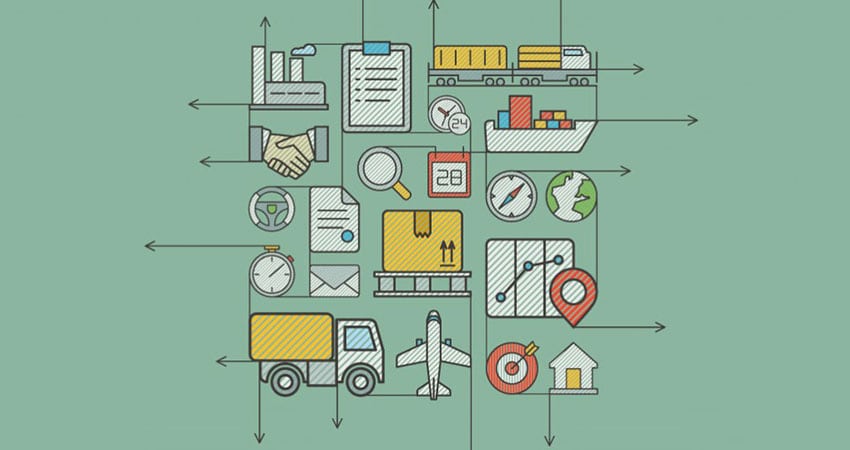Retail and ecommerce companies that utilize third-party fulfillment (3PL) services sometimes consider transitioning back to internal fulfillment operations. Sometimes it’s to control costs, while others have had a bad experience with 3PLs and now only trust themselves with their operations. Either way, using a 3PL isn’t for everyone.
This decision is done regularly by companies, but requires careful planning, good project management, upfront capital, a realistic budget, a schedule and risk evaluation. There are many moving parts and decisions that must be made in a timely manner.
To better understand all that’s involved in this kind of move, here are 10 major considerations:
Hiring and Managing Labor
Key to bringing fulfillment in-house is recruiting and hiring the right director and key department managers for receiving, put away and replenishment, picking, packing, returns and inventory control. You also have to recruit and retain an hourly workforce. Are you prepared to handle the labor challenges that have plagued this industry?
One major benefit of utilizing a 3PL is they take on the labor responsibilities. You also can’t forget about the additional HR needs. And if your business has seasonal swings, you must staff to handle the peak.
Employee benefits range from 20% to 30% over and above hourly wage costs. Many companies underestimate how much they have to pay to remain competitive. With a new management and staff, the reality is that the first year’s turnover costs may be higher than expected.
Distribution and Order Fulfillment Systems
Will you have to implement a WMS to support your order fulfillment process? Many companies bringing fulfillment in house overestimate their system capabilities, only to find out that it can’t handle receiving, slotting, efficient picking and batching, kitting, etc. A new WMS can take 6-12 months or longer to implement, especially these days. In addition to functionality, can the system rate shop and provide proper support for shipping?
Performance Measurement
What critical metrics and KPIs will be reported to ensure you’re managing fulfillment appropriately as you make the transition? These metrics will allow management to understand the performance in the initial weeks after go live in the new facility.
Competitive Freight Costs
Can you negotiate favorable freight contracts? Many companies utilizing 3PL services also utilize their freight contracts. Your shipments are a portion of an overall volume and shipping profile. How do your costs compare? As we work with clients to negotiate freight contracts, they quickly understand that package volume isn’t the primary factor driving pricing. Have you analyzed the shipping zones, package weights and accessorial fees, and how these factors will impact your costs?
Fulfillment Center Location
Where will you locate your facility? Many companies want it near their corporate offices or manufacturing. As we help companies analyze metro areas and sites, we focus on proximity to the customer base to reduce freight costs. How can you achieve the greatest reach to the population centers with two-day shipping? Is the workforce available at competitive rates? Are existing facilities available since occupancy and lease costs are at all-time highs?
Efficient FC Automation and Material Handling
How much automation should you consider implementing? Have you properly budgeted for forklifts, racking, shelving and packing stations? Will you require wire guidance for lift trucks, automation such as power conveyors, vertical lift modules or other goods-to-person technology, as well as sortation and print and apply?
How can different levels of automation reduce your labor costs and challenges? Admittedly, it may increase your initial capital expense. How can you realistically cost justify the ROI?
Efficient Processes and Organization
How can you hire for day-to-day processes? Most companies underestimate the need for experienced people to focus on inventory control, slotting, efficient replenishment and proper order batching. They focus on basic tasks such as receiving, picking, packing and shipping and may hold off on some of these critical positions. This often leads to very costly problems for companies transitioning from 3PL, as they may be functions you never had to manage.
3PL vs. Internal Cost Per Order Comparison
What will be your budgeted cost per order for insourcing vs. your current 3PL? If you can’t adequately answer this question, you should take a step back and determine these fully-loaded costs. You must factor in the annual labor costs along with:
- Management salaries
- Facility lease costs including taxes insurance, depreciation and amortization of automation and material handling
- Common area maintenance and utilities
- Packaging and shipping supplies
We recommend leaving freight out of the equation and analyzing this separately.
Risk Analysis
Do you have experience planning and opening a new facility? What is your implementation timeframe? Most companies underestimate the 12 months needed to hire staff, set up processes and purchase and install new automation.
After opening, most companies don’t reach their targeted productivity for the first 4-6 months. The first year’s turnover can mean providing lower-than-expected service levels and higher costs. All of these are risks you and your management team should objectively evaluate and weight out.
Management Priorities
In small-to-midsized companies, opening a new FC and managing internal fulfillment often distracts senior management from concentrating on key functions such as marketing, merchandising and web development. You need to ensure this is the right approach, and you have sufficient resources for transitioning successfully.
In summary, deciding whether to move from 3PL to internal fulfillment requires diligent study, strong project management chops and skillful planning. Problems in managing the transition can put a severe damper on the customer experience and increase your fulfillment costs.
Brian Barry is President of F. Curtis Barry & Company

